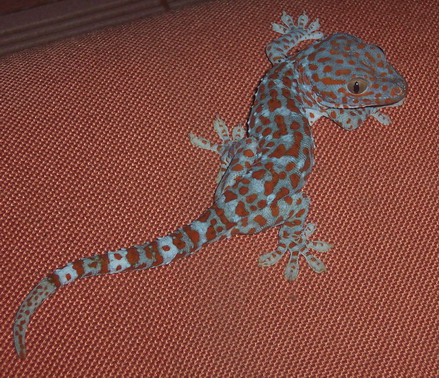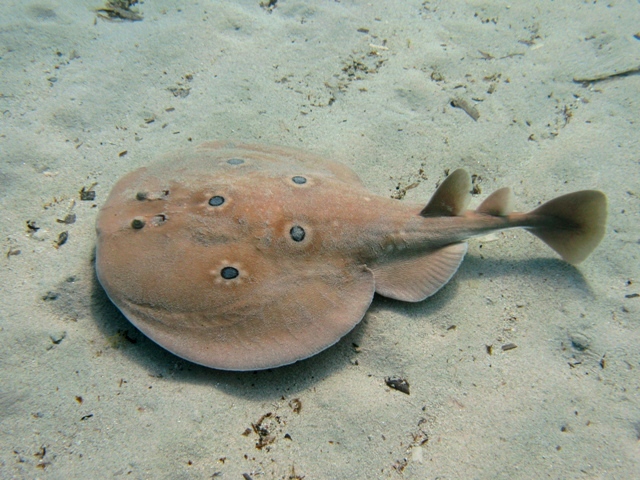For a while now I've always had a soft spot for animals with the same Genus and species name in their Linnaen classification. For those who had no idea about half the words in that last sentence meant, there was a Swedish bloke called Carl Linnaeus who looked a bit like this:
He lived in the Eighteenth century and is today known as the father of modern taxonomy. that is probably the least cool thing to be "the father of" considering people like Robert Oppenheimer who is the father of atomic bombs or Charles Townes who invented lasers
Sadly Linnaeus is not in this sort of a league of inventing things, he's probably only a little bit cooler than Gary Gygax who is the father of Dungeons & Dragons. But I love taxonomy, despite the fact that it's cumbersome, unpronounceable and all written in a long dead language. I think there's something brilliant about the fact that once something has a Linnaean classification then everyone around the world can find out exactly which living thing that you're talking about, and if they so wish, they can discern exactly how it is related to all other living things.
Taxonomy has come a long way since Linnaeus. His original system started out by asking 'animal, mineral or vegetable' to which modern scientists would not only point out that minerals are not alive but you have also glossed over a massive range of living things from the obvious omission of fungi, through bacteria and other prokaryotes to the more exotic Chromista (algae), Protozoa (things like amoeba) and Archaea (just very weird things). In fact, modern taxonomy is a rather complicated subject that generally uses evolutionary relatedness to show how close two different organisms are. But the Linnaean idea of breaking things into groups to show how similar or different they are is still there.
I also really like the idea of using Latin as the basis for taxonomy as nobody speaks it anymore. It's nice that English isn't the dominant language of nature and everyone across the world is equally puzzled by these strange names. It also gives me a use for my Latin GCSE. I can honestly say I've never used it since doing Latin at school except for taxonomy, and that's probably more than most people who do Latin can say.
Anyway, all of this brings me in a very roundabout way to tautonyms, which are creatures that have two names which are the same in their Linnaean classification. A tautology is using different words to say the same thing, like a "free gift", "forward planning" or a "new innovation" although in the case of tautonyms it's the same word that is repeated.
There are loads of examples of this in the natural world, usually because they are the quintessential example of that genus of the animal like Vulpes vulpes, the red fox or because they are the only example of an animal in that genus like Caretta caretta, the Loggerhead turtle. Sometimes, however, it seems that the person naming the animal just couldn't be bothered to come up with anything else, so here are some of my favourites:
The Obvious
Gecko gekko - it's a gecko (a Tokay gecko)
Rattus rattus - a rat! Okay, two rats.
Hyaena hyaena - Hyena! Spelt a bit wrong!
Gorilla gorilla - Wayne Rooney
The Slightly Obscure
Avicularia avicularia - the pink-toe tarantula - I couldn't leave bugs out of this, could I!?
Indri indri - The, erm, Indri. One of Madagascar's most beautiful inhabitants.
Phocoena phocoena - The harbour porpoise, although in latin phocoena means "big seal" apparently
Mola mola - Not a mole, an ocean sunfish.
The unexpected
Hippocampus hippocampus - A seahorse, not a part of your brain. Maybe the hippocampus looks a bit like a seahorse?
Torpedo torpedo - The torpedo, which is apparently not an underwater missile but a sort of ray type thing.
Tyrannus tyrannus - An Eastern kingbird, not very Jurassic Park...
Puffinus puffinus - Which is a Puff... Oh, wait no. It's a Manx Shearwater. Puffins are Fratercula articus, which means "little brother" because they're supposed to look like monks. I've never seen a monk with orange feet before.
Anyway, that is the strange and nerdy world of taxonomy, tautonyms and long-dead Swedish naturalists. Personally I think it's absolutely brilliant.
Thursday 8 March 2012
Tautonyms
Labels:
Avicularia avicularia,
geek,
Linnaeus,
taxonomy
Spiders saving people from mosquitoes in flooded Wagga Wagga
Despite the devastation brought about by the current flooding in Victoria, there is at least some respite for residents. Some amazing spider behaviour might actually be protecting them from mosquitoes. Not only are these normally solitary wolf spiders (Lycos leukarti) putting up with each other's company, but thanks to an abundance of food in the form of mosquitoes their webs are covering the excellently named Wagga Wagga in cobwebs. Normally the spiders would eat their webs when they are done with them but the flood waters mean an abundance of mosquitoes and so an abundance of adult spiders. In fact, Brett Finlayson from Taronga Zoo suggested that the over abundance of spiders in Wagga Wagga is actually protecting the local population from the mosquitoes.
Finally, a positive spider story in the mainstream media - hooray for The Sydney Morning Herald!
Full story here
Finally, a positive spider story in the mainstream media - hooray for The Sydney Morning Herald!
Full story here
Jim's Show Reel
We went out into the garden to do a bit of mid-winter spider hunting. Surprisingly we actually found some, and the house spider, Tegenaria gigantea, was an absolute whopper!
What a pro!
Thanks to Liz Newton Media for the video editing
What a pro!
Thanks to Liz Newton Media for the video editing
Subscribe to:
Posts (Atom)












